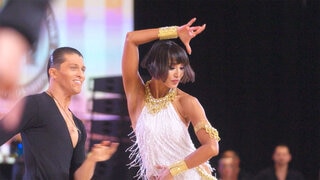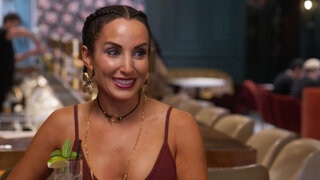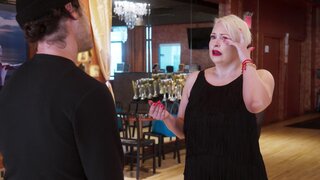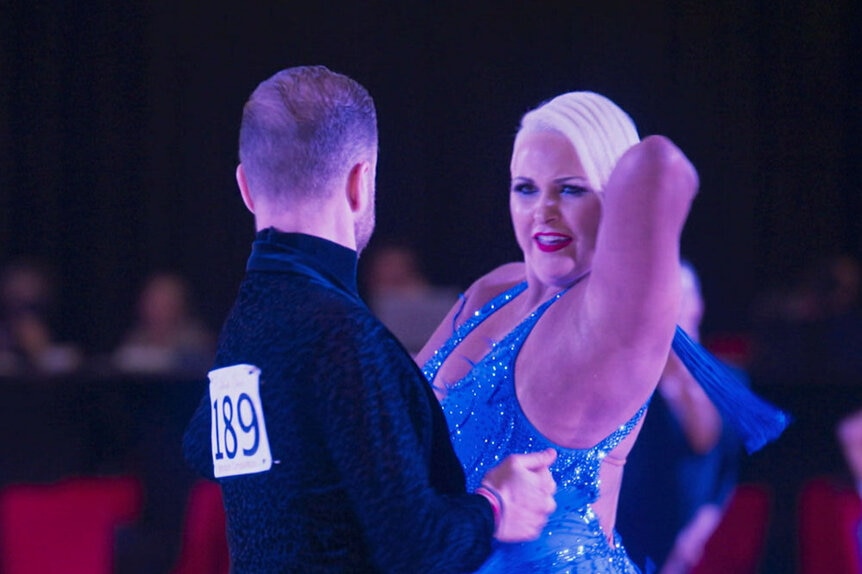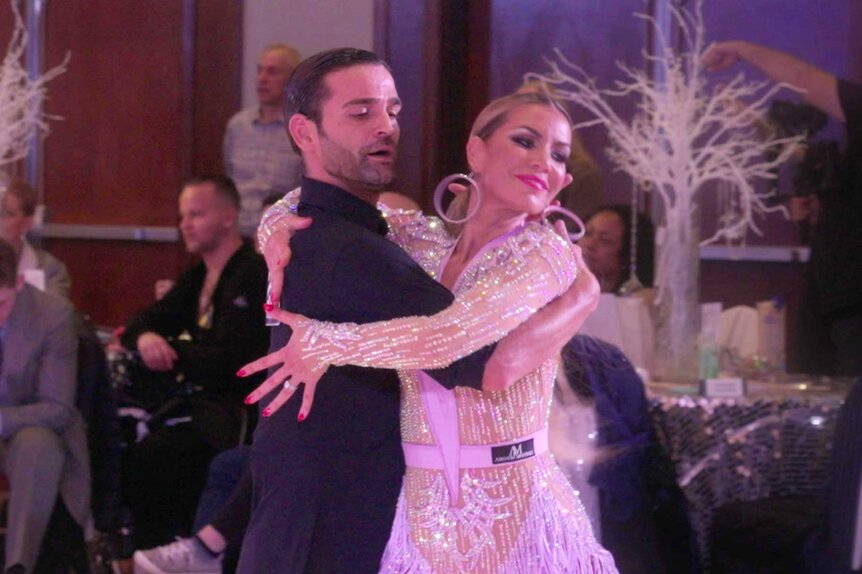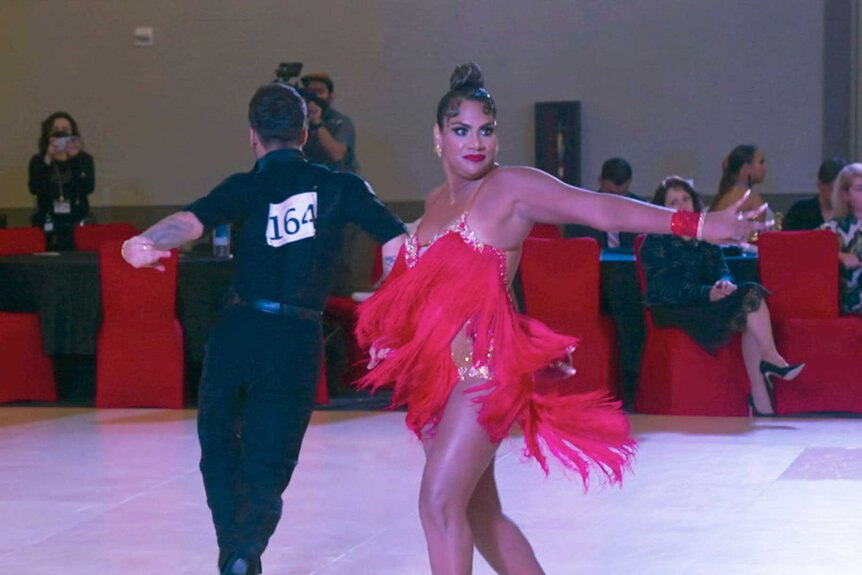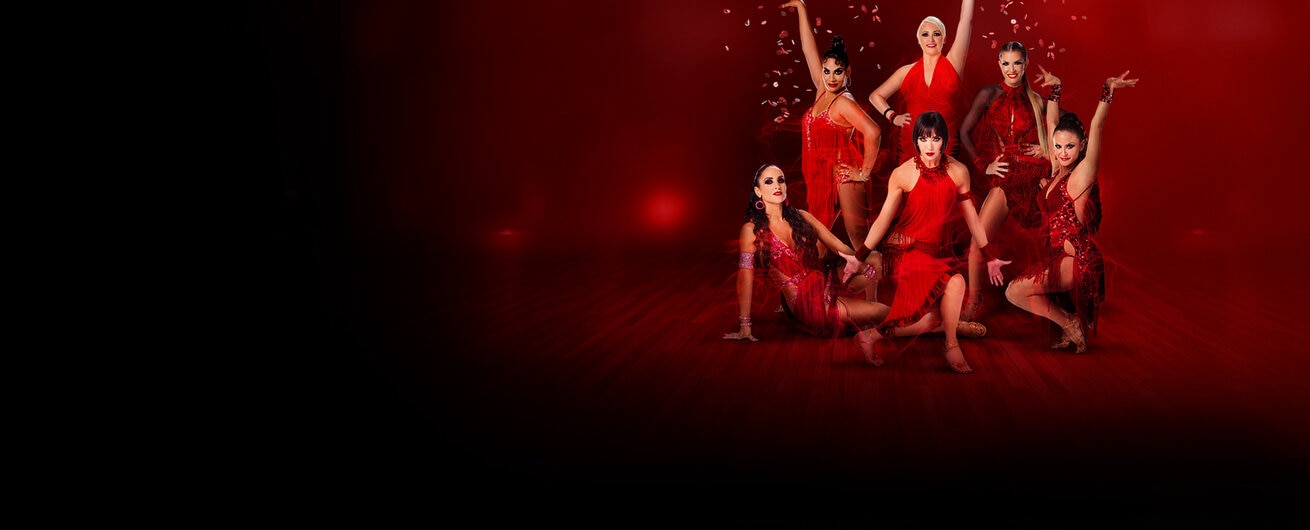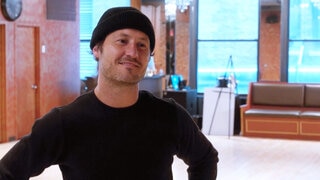
Create a free profile to get unlimited access to exclusive videos, sweepstakes, and more!
Everything You Need to Know About Ballroom Dance Competitions, as Seen on Dancing Queens
Take a deeper look at the world of ballroom dancing and learn how it started, how it's evolved over the decades, and how you can get involved, all before Dancing Queens premieres on Bravo.
Waltz, tango, foxtrot, cha-cha, swing, rumba — you might have heard these terms before, but ballroom dancing includes a lot more than turns, dips, and footwork. Bravo’s new series Dancing Queens, premiering May 9 at 9/8c, follows a group of six women who are turning their undying passion for dance into a fierce competition.
What sets ballroom dance apart is that it’s always danced with a partner — which is where the term “Pro-Am” comes in, meaning a professional dancer paired with an amateur dancer. But Colette Marotto, Donie Burch, Gaelle Benchetrit, Leonie Biggs, Pooja Mehta, and Sabrina Strasser are hardly amateurs.
They know each other from ballroom dance competitions and have developed friendships. And they spend thousands of dollars a year — sometimes reaching into the six figures — on hair, makeup, outfits, and travel expenses for their professional partners in order to practice, travel, and compete.
Here's everything you need to know about the world of ballroom dancing.
History of Ballroom Dance
Ballroom dance began as a social event, dating back to the time of lavish court balls, with royalty and courtiers. Ballroom dances were held under Louis XVI’s regime in France in the 1700s, as well as other European courts like England, Austria, and Russia, according to New World Encyclopedia. Ballroom dancing also made its way from England to America, with George Washington’s inauguration including a ballroom dance.
Eventually, ballroom dancing became a way for young men and ladies to “court” or date each other and socialize, according to Britannica. Cotillions or other gatherings would be held, and each woman would be given a decorative dance card on which to list her partners for each dance. A man would ask permission to enter his name on a woman’s dance card.
Beginning in the 1870s, teachers formed professional associations and established ballroom styles that turned into the competitions held today. That’s also when studios were created to teach the steps and patterns of the dances to the general public, according to Britannica.
By the 1920s, band arrangements of fox-trots and other ballroom dance music were put out over the radio, which exposed more people to the music and the dances. As Prohibition ended in America in 1933, dancing in public became more closely linked with American social scenes, according to Britannica.
Styles of Ballroom Dance
There are more than 20 styles of ballroom dance that mostly fall into four categories, according to Masterclass: American Smooth, American Rhythm, International Standard, and International Latin.
American Smooth “typically focuses on fluid movements and graceful execution across the dance floor, often performed to Western music,” according to Masterclass. The types of dances include the waltz, tango, foxtrot, and Viennese waltz. International Standard is similar to this category, only often danced outside the U.S.
RELATED: Meet the Cast of Dancing Queens (PHOTOS)
American Rhythm is, as you can imagine from the name, a bit more upbeat of a style. It’s typically performed with Latin music and includes dances like the cha-cha, bolero, mambo, rumba, and East Coast swing. International Latin is just like this category, only it’s performed everywhere else in the world other than the U.S. and Canada.
There are other forms of ballroom dance as well, which include the salsa, Argentine tango, merengue, bachata, and hustle.
How is Ballroom Dancing Judged?
A panel of judges usually evaluates dances, and they use many different kinds of criteria. Some things judges look for include posture, timing and basic rhythm, body line, movement, presentation and foot action, according to the World DanceSport Federation. They also judge “intangible” things like how partners fit together as a couple and how their costumes look.
How Can You Get Involved in Ballroom Dancing?
If you want to get out on the dance floor yourself, the best place to look is your local college or university. Many colleges provide ballroom dance classes as part of continuing education programs, according to USA Dance, Inc. Some organizations like the YWCA, Elks, or Moose Lodges also offer dance classes to members. Many city and county recreation departments also offer ballroom dance classes.
Dancing Queens premieres on Bravo on Tuesday, May 9 at 9/8c and episodes stream the next day on Peacock.
